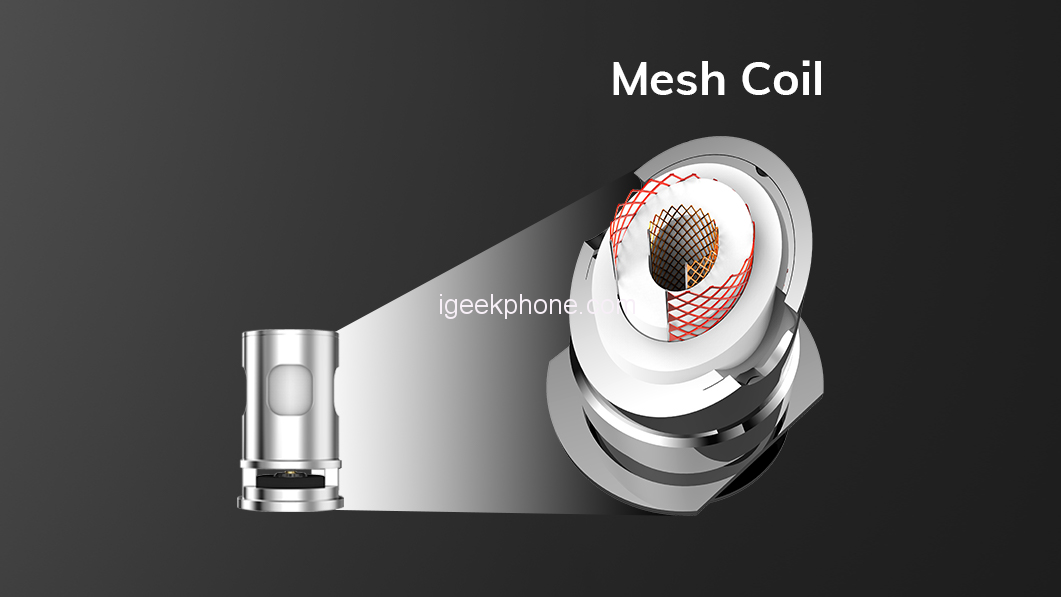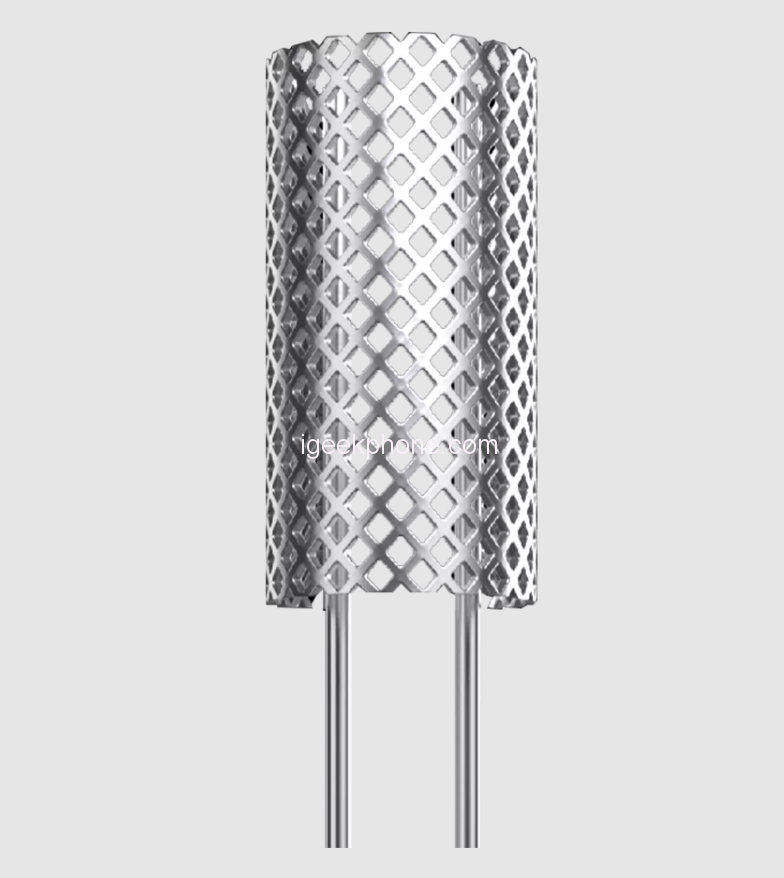The relentless quest for innovation in the vaping industry has fueled an ongoing competition amongst vape manufacturers to maximize the surface area of coils. The traditional dual coils incorporating two wires have transformed over the years into the modern marvel known as the mesh coil. Today, we embark on a journey into the world of mesh coils, delving into their emergence, advantages, drawbacks, and compatibility with different e-liquids.

The Surface Area Race
In recent years, an arms race has been underway among vape manufacturers to maximize coil surface area, a critical factor in determining the overall vaping experience. The race was kicked off with dual coils that integrated two wires. But the real game-changer emerged with the original Aspire Cleito tank, a vaping device that redefined cloud vaping with regulated mods by maximizing the coil’s surface area inside the chimney (the vertical section inside the tank). Today, this relentless pursuit of surface area maximization has led to one of the most significant evolutions in coil technology – the mesh coil.
The Importance of Surface Area in Coils

Why is surface area so crucial in vaping? The answer lies in the principle of how vapor is produced. When e-liquid comes into contact with the heated coil, vapor is generated. The larger the surface area of the coil, the more e-liquid is heated simultaneously, resulting in increased vapor production. Some vapers also argue that a larger surface area allows for a more intense flavor experience. However, there is ongoing debate over whether lower-wattage vaping (which produces less vapor) actually enhances flavor.
Unveiling Mesh Coils
Contrary to what their name might suggest, most mesh coils are essentially strips of metal with holes punched in them. This innovative design maximizes the coil’s surface area while minimizing volume, providing a much larger interface between the coil and the e-liquid. Mesh coils can be crafted from stainless steel or kanthal, the same material used for Cleito mesh coils.
Mesh coils are not entirely new to the vaping world; they were initially used as wicking for rebuildable tanks before cotton became the preferred wicking material. While initially used predominantly for cloud vaping, mesh coils have gained traction in recent years for low-wattage vaping and Mouth-to-Lung (MTL) devices.
Advantages of Mesh Coils
The primary advantage of mesh coils is their large surface area. Supporters of mesh coils advocate that their design leads to:
- Faster ramp-up time: Mesh coils heat up quicker than traditional coils due to their larger surface area.
- Increased vapor and flavor: With more e-liquid heated simultaneously, mesh coils can produce more vapor and a more intense flavor.
- More consistent vape: Mesh coils provide a more even heat distribution, leading to a more consistent vaping experience.
- Longer-lasting coils: Even heat distribution also reduces the chances of burnt-out coils, prolonging the lifespan of mesh coils.
- Improved flavor production: Some vapers have reported a more superior flavor production from mesh coils compared to traditional coils.
- Reduced power requirements: Mesh coils need less power to reach optimum performance, making them more energy-efficient.
- Compatibility: Many mesh coils are cross-compatible with existing tanks, which means you can try mesh without needing to purchase an entirely new tank.
Disadvantages of Mesh Coils
Every coin has two sides, and mesh coils are no exception. Increasing the surface area of the coils means using more juice, which might not suit those vapers who aim for economical use. This might prove to be particularly frustrating in the EU, where regulations limit the tank size to 2ml, leading to frequent top-ups.
Mesh coils don’t get as hot as Clapton coils, and if you’re a vaper who prefers a warm vape at high wattages, then mesh might not suit your style. Additionally, mesh coils might perform differently with certain e-liquid flavors than others.
Which E-Liquids Should You Use With Mesh Coils?
When mesh coils first entered the scene, they were primarily used with high VG e-liquids. However, the advent of MTL mesh coils has broadened the range of compatible e-liquids. Some mesh coils can now be used with e-liquids having a VG:PG ratio of 50:50 and with nicotine salts.
The best e-liquid to use with different coils is often recommended on retailers’ product pages. But if you’re still in doubt, here’s what you should look for:
- Coil description: If it’s labeled a Mouth-to-Lung (MTL) coil, it’s best suited for e-liquids with a VG:PG ratio of around 50:50 and with nicotine salts. If it’s a Direct-Lung (DL) coil, it’ll work best with higher VG e-liquids.
- Recommended wattages: High wattages are typically designed for DL coils that work with high VG e-liquids. Low wattages are designed for MTL coils that work with higher PG e-liquids.
- Resistance: Very low resistance coils are generally designed for high VG e-liquids. A 0.16Ω coil, for instance, would usually be used with e-liquid having a VG:PG ratio of 70:30 or above. Some exceptions exist, but these are usually clearly labeled as DL coils.
Conclusion
The rise of mesh coils signals a significant shift in vaping technology. Their large surface area brings along a range of benefits, including more vapor and flavor, faster ramp-up time, and more consistent vaping experience. While they might consume more e-liquid and may not suit all vaping styles, their strengths are undeniable.
The choice between mesh and traditional coils ultimately depends on personal preference and vaping style. Each brings unique attributes to the table and caters to different aspects of the vaping experience. To explore more about mesh coils and their potential advantages over traditional coils, visit Keystone Vape’s comprehensive guide and deepen your understanding of this innovative technology.
Mesh coils represent a bold step forward in vaping technology, an embodiment of the industry’s commitment to continuous improvement and innovation. As vapers worldwide adopt this new technology, the future of vaping looks promising, holding in store a wealth of possibilities yet to be discovered.









